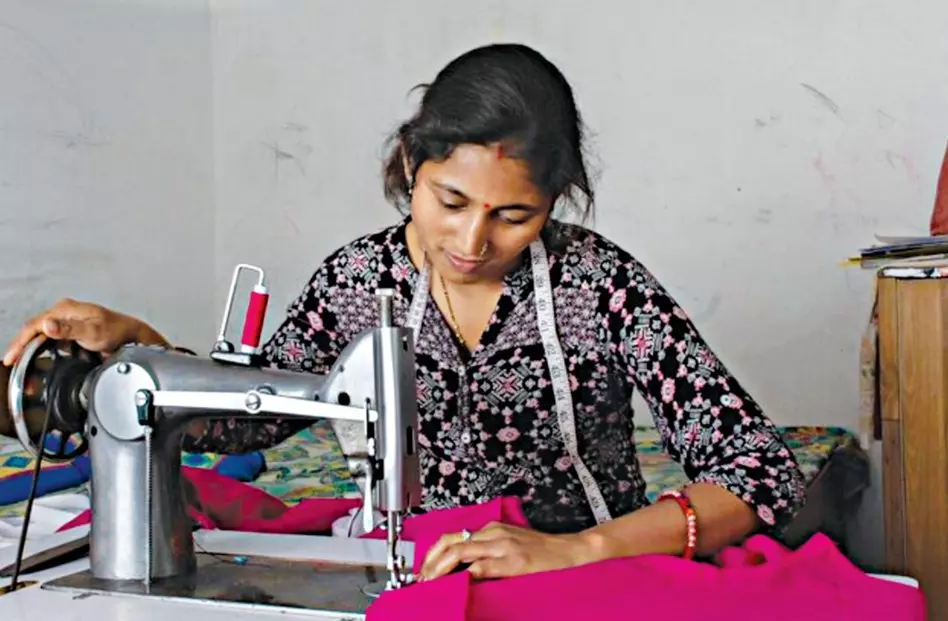Trump Tariff Needles The Fashion Industry
Rocked by US’s steep tariffs on foreign textiles and clothing, manufacturers think of sourcing strategies as consumers may have to put up with inflated prices

The global fashion industry has received a big jolt. Fashion houses and clothes manufacturers are feeling the pressure of Trump administration’s aggressive tariffs on foreign textile and apparel imports. It has sent shockwaves through supply chains and retail markets. The steep duties on clothing imports from key manufacturing hubs — China (54%), Vietnam (46%), Cambodia (49%), Bangladesh (37%), and India (26%) — are already reshaping sourcing strategies and threatening to inflate prices for consumers.
For a $1.7 trillion global fashion market that relies on fast, cost-effective manufacturing, the imposition of such tariffs is more than a disruption — it’s a potential overhaul of how and where clothes are made.
Textile Sector Woes
The Indian textile industry, the country's second-largest employment generator after agriculture, is already bracing for a downturn in orders. While the brunt of these duties hits Chinese and Southeast Asian exporters hardest, Indian textile producers — who enjoy comparatively lower tariffs — are not escaping unscathed. “India’s tariff rate may seem modest in comparison, but buyers are hesitant,” says Neha Gupta, a Mumbai-based fashion analyst. “The fear is that tariffs could rise further or that U.S. brands might pull back entirely, shifting to domestic manufacturing or alternative suppliers in Africa or Latin America. For many Indian ex-porters, the uncertainty itself is a business killer.” Accord-ing to a press release from India’s Press Information Bureau (PIB), the United States and European Union account for nearly 47% of Indian textile and fabric exports.
Supply Chain Shakeup
This unpredictability is creating ripple effects across fashion’s entire value chain — from cotton farmers in Gujarat to seamstresses in Dhaka, and from fashion designers in New York to fast fashion executives in Los Angeles. Designers who have long relied on affordable and high-quality imported fabrics are scrambling to reassess sourcing options.
Beyond production, retail pricing is also under pressure. U.S. fashion brands, faced with increasing costs, are weighing whether to absorb losses or pass them on to customers. Neither option bodes well for an industry already struggling with post-pandemic recovery and shifting consumer behaviour.
Creativity On The Line
“It’s a lose-lose situation,” says Ravi Jurel, fashion critic and blogger. “Consumers are getting sticker shock on items that were once affordable, and designers are losing creative freedom because they’re now restricted by what’s accessible and cost-effective. Tariffs are not just numbers — they’re eroding the very diversity and spontaneity that makes fashion exciting.”
Even brands that once boasted ethical sourcing and sustainable practices are reconsidering their strategies, fearing that their commitment to international craftsmanship might now come at too high a financial cost. Many mid-size labels are being forced to delay or cancel collections due to rising import expenses.
Industry Response
Meanwhile, large multinational brands with deeper pockets and more diversified supply chains are looking for creative solutions. Some are increasing investments in robotics and AI-driven production to reduce their reliance on imports altogether. Others are pushing manufacturing into lesser-tariffed countries or exploring domestic production despite higher labour costs. Back in India, the implications are deeply socio-economic. The textile sector employs over 45 million people directly and many more indirectly. With orders dwindling and margins shrinking, smaller manufacturers and exporters are laying off workers, a worrying sign.
“The irony is that in trying to protect American jobs, these tariffs are endangering millions globally, especially in countries like India where textiles form the backbone of the rural economy,” Neha adds. “We’re not just talking about garments — we’re talking about livelihoods.”
Fashion’s Future at Stake
The US trade policy is once again under the spotlight. For the fashion world, the stakes are high—and not just in terms of style. Jurel concludes, “Fashion thrives on collaboration across borders. These tariffs are putting walls where we need bridges.”
If these tariffs continue, or worse, expand, the result could be a more homogenized and expensive fashion landscape with fewer options for consumers and diminished opportunities for emerging economies.
Taxing Times
• The US has imposed steep duties on clothing imports from key manufacturing hubs—China (54%), Vietnam (46%), Cambodia (49%), Bangladesh (37%), and India (26%).
• The Indian textile industry is the country's second-largest employment generator after agriculture
• The Indian textile industry is already bracing for a downturn in orders.
• The US and European Union account for nearly 47% of Indian textile and fabric exports (PIB)

